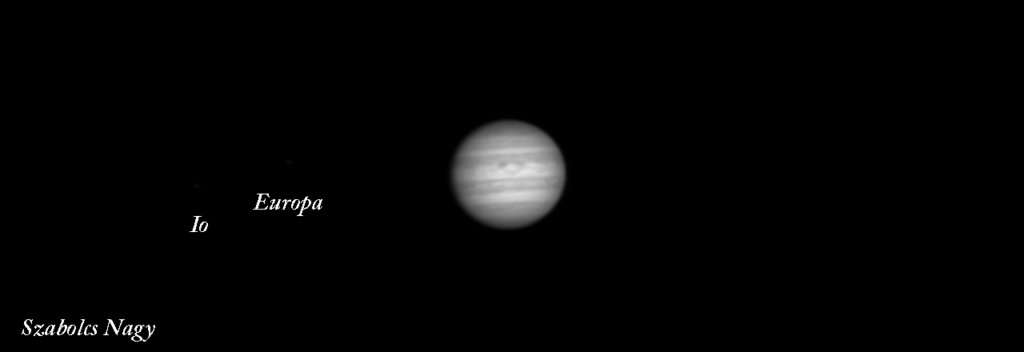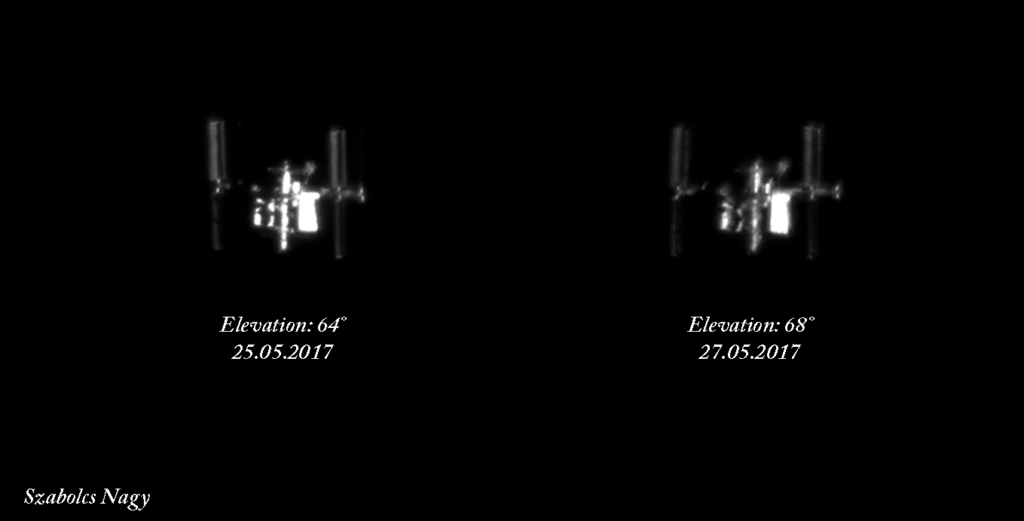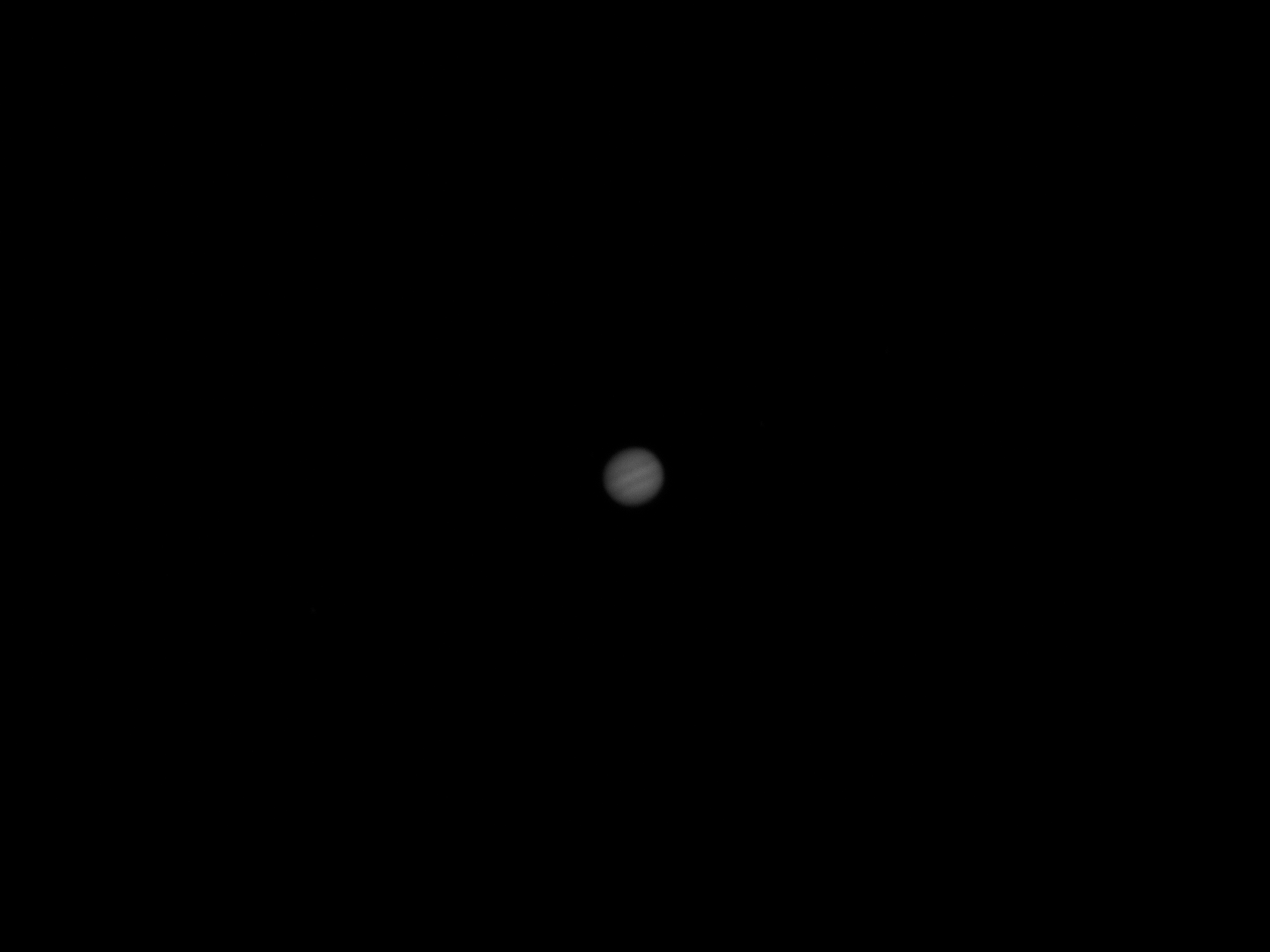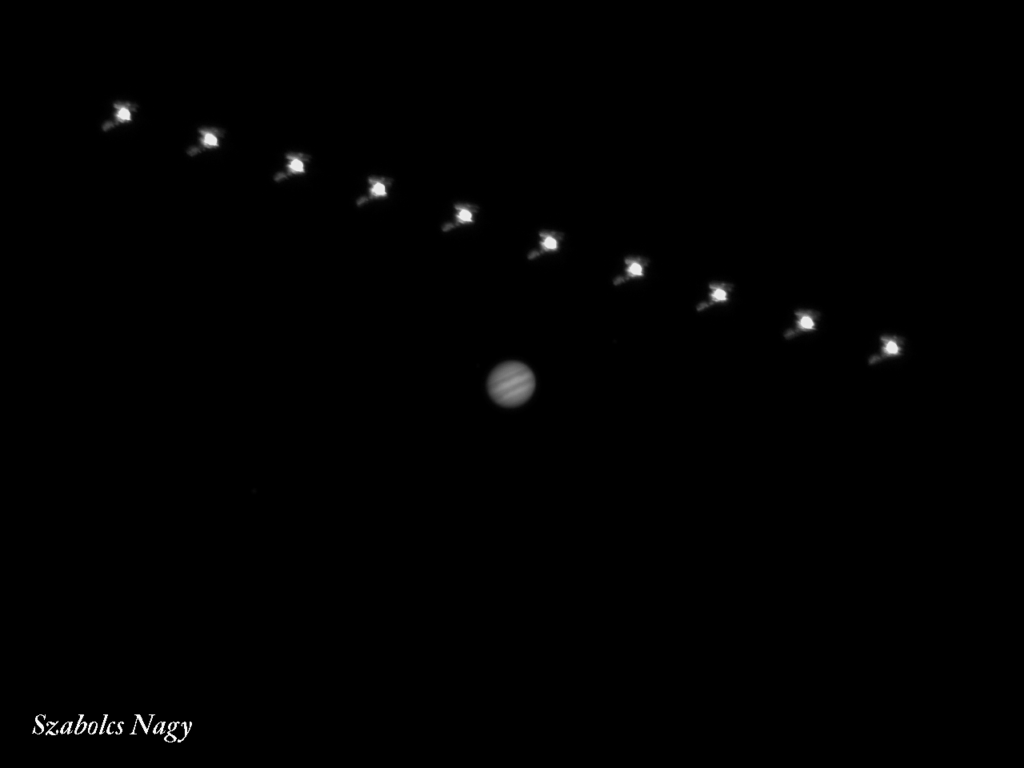ISS Two days close-up marathon with Jupiter taming
According to my blog post form back then:

I managed to identify a few little details on the station, such as the Cupola, BEAM (Bigelow Expandable Activity Module) and the Canadarm 2 robotic arm. To be honest my main goal was Cygnus-7, I’ve marked its position but I’m not entirely convinced if visible.
The second attempt happened on 27th May 2017 at 0:36 am, similar pass at 68 degrees of elevation, ended up nearly with the same photo, slightly more blurrier than the first attempt. Probably it is less overexposed, Leonardo module, Cupola and BEAM are less bright so easier to identify. I wanted to catch a much higher over head pass too, but I found a better challenge and chose that instead…
Probably the toughest task was to make the decision about camera settings. Only rarely happens, that the current visual magnitude of ISS (at the exact time of transit) matches the other object’s visual magnitude. This one wasn’t one of those rare occasions sadly, the station was so much brighter (even if it doesn’t seem to be a massive magnitude difference), that I couldn’t avoid slight overexposure. But this seemed to be the borderline based on experience from previous night. So in Fire Capture I set expo to a value of 0.88 ms time and gain for 55.
First here is a time lapse video taken with my dslr (Canon 600D and a Samyang 8mm fisheye lens). I have to say it was tremendous fun to see ISS rising and approaching fast toward Jupiter. The transit seemed so unlikely at first sight, but the prediction was (obviously) correct and eventually took the right direction. I tried to watch the event with naked eye and also keep an eye on the laptop screen too.

Phenomenal experience, highly recommended to anybody – even with naked eye. The sheer accuracy of the prediction blows my mind every time I witness it.
The gif above shows the actual close pass. It is a real shame, that I couldn’t find a place on the centreline, this could have been a nice ISS transit – I mean as good as it can be from UK at this relatively low elevation.
Mind this is approximately the real speed of the event. I never work with the raw video directly, instead usually brake the video down into frames and after post processing those frames, I make a gif from them. This way I can enhance the frames slightly, getting rid of some noise if possible and make all the necessary general improvement (contrast, brightness, etc.).
My scope has 1200mm of focal length (FL), which usually isn’t the best magnification for close ups so I use a 2.5x Televue powermate to get the right magnification level. But due my inaccurate position from centreline, I did’t want to risk missing ISS completely. Therefore barlow option ignored and went for prime focus instead. This way I could avoid any failure – believe me there is nothing more frustrating than missing ISS because your field of view is too little. It happened to me at a few lunar and solar ISS transit, so kind of learned my lesson.
And finally here is a funny shot, another composite from the time lapse. Playing wizard with ISS wasn’t planned at all. At home I was laughing out loud , when I discovered the possibility of a cool composite shot. So do you like my ISS laser pointer? 😀
Equipment:
Skywatcher 250/1200 Flextube scope on dobson base
Zwo ASI120MM camera
Zwo Red filter
Televue 2.5x powermate
25/05/2017






